Spotter's Guide - Summer Wildflowers
During the summer, beautiful blankets of colour cover the Forest floor. Here are our top 10 wonderful wildflower species to look out for this season.
Common species
Flowering from April through to October, the forget-me-not is very common throughout the Forest. It can be spotted in many of our woodland, plantations, and meadows; especially those which were historically arable land.
It has a beautiful blue hue that varies from a vibrant colour to a more muted grey tone. Multiple flowers grow off the same stalk, each formed of five petals. Although it is often considered to be a weed, in the language of flowers, the forget-me-not symbolises true love and memories.
It has a beautiful blue hue that varies from a vibrant colour to a more muted grey tone. Multiple flowers grow off the same stalk, each formed of five petals. Although it is often considered to be a weed, in the language of flowers, the forget-me-not symbolises true love and memories.

A truly standout wildflower that blooms from June to September, foxgloves are most commonly purple/pink, but can appear as pale as white. Favouring woodland clearings and banks, this wildflower is easily identifiable with its tall spikes (reaching up to two metres!) filled with bell shaped blooms opening from the bottom up.
Foxgloves are an important pollen source and have evolved with bees in mind. This plant is poisonous, so remember to always wash your hands after exploring the Forest.
Foxgloves are an important pollen source and have evolved with bees in mind. This plant is poisonous, so remember to always wash your hands after exploring the Forest.
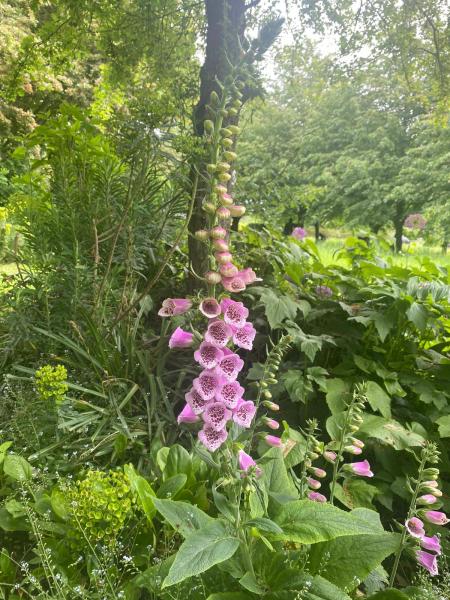
Herb Robert, a type of crane’s-bill, flowers between May and September. It is found in many of our Forest habitats including woodland and hedgerows, favouring shady, rocky spots. Its small flowers are pink and formed of five petals. This plant also has lobed leaves and thin hairy reddish stems. In folklore Herb Robert is believed to be the plant of the mischievous hobgoblin Robin Goodfellow!
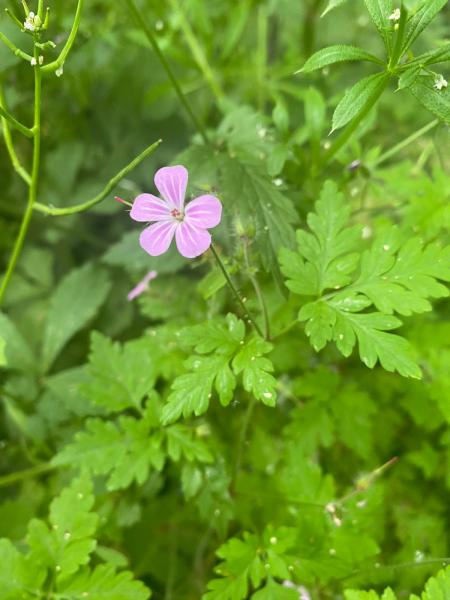
Meadow buttercup - A summertime favourite, this bright glossy yellow flower can be observed from April to October. During the summer, this wildflower can be seen carpeting many of our grasslands, meadows and woodland rides and edges. Meadow buttercup flowers are formed of five petals and grow from multiple branches, they can grow as tall as one metre to help compete with grass species. Myth has it that cows grazing on buttercup meadows provide the finest butter.
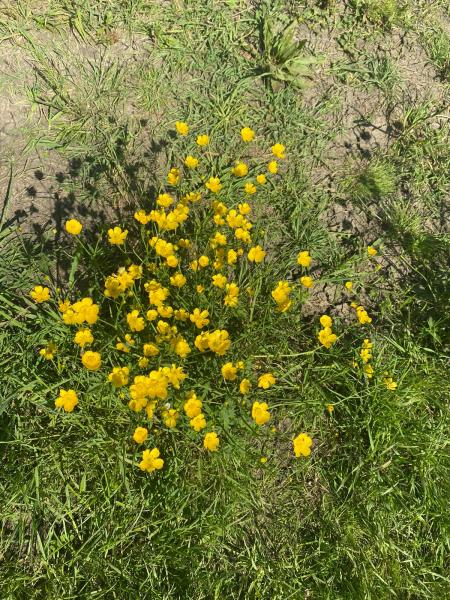
Flowering May to November this wildflower is a favourite of bees. Red clover has trefoil leaves bearing a white V shaped marking and purple/pink rounded flower heads. This plant, not as common as white clover, favours grassy areas of the Forest such as our meadows, pastures, and woodland rides. In the Middle Ages clover was often worn as a charm to ward off evil spirits and witches.
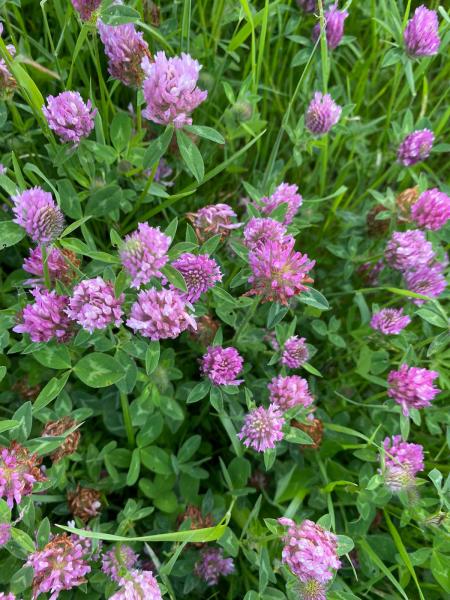
This beautiful dainty wildflower can be found flowering from May to September. A member of the pea family, common vetch is a scrambling plant which uses its curly tendrils to hook onto other plants. It has small purple/pink flowers appearing either singularly or as pairs.
Common vetch is found throughout the Forest, favouring our grassland areas and woodland rides. Archaeologists have found evidence that ancient civilizations would eat common vetch much like we eat peas today!
Common vetch is found throughout the Forest, favouring our grassland areas and woodland rides. Archaeologists have found evidence that ancient civilizations would eat common vetch much like we eat peas today!
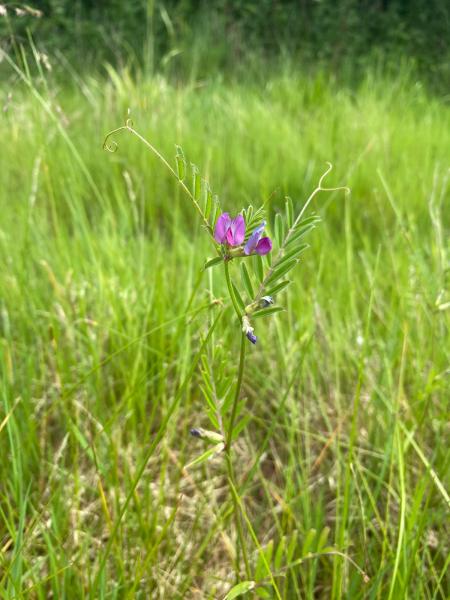
Uncommon species
The greater butterfly orchid favours unimproved meadows including calcareous grassland and open woodland rides. This beautiful orchid can be seen flowering June to July. Its flowers are shiny white, often with a green tinge. There can be between 10 and 40 flowers on each flower’s spike. This wildflower has two shiny wide leaves at its base and few smaller leaves higher up the stem.
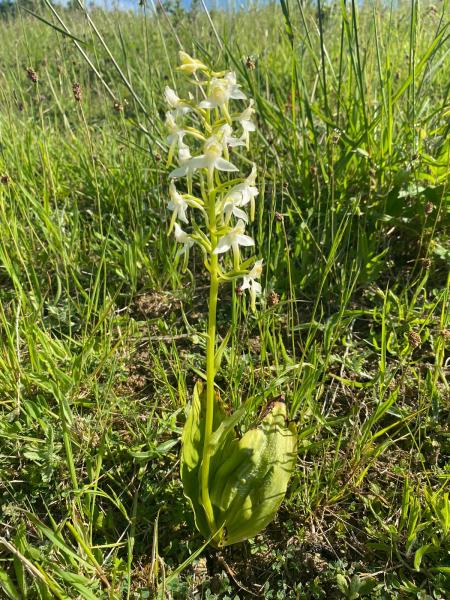
Bee orchids - Flowering June to July, this orchid prefers calcareous habitat, in particular grasslands. They are also found in our open woodland rides. This stunning yellow and reddish-brown wildflower mimics the shape, texture, and colourings of a female bumblebee. Each flower is framed by three bright pink sepals.
Bee orchids usually produce three to five flowers per spike. Sadly, the bee this flower mimics does not live in the UK, as such male bees are not attracted to a ‘mate’. Therefore, it is thought this orchid has evolved to self-pollinate!
Bee orchids usually produce three to five flowers per spike. Sadly, the bee this flower mimics does not live in the UK, as such male bees are not attracted to a ‘mate’. Therefore, it is thought this orchid has evolved to self-pollinate!
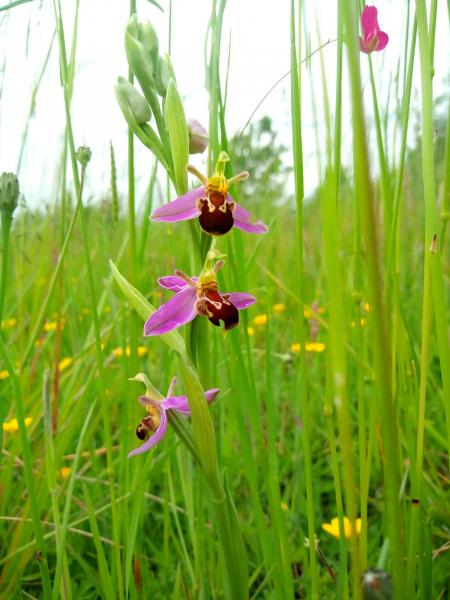
Southern marsh orchid - This orchid flowers in late May to July and has so far only been found in one locality within the Forest. Primarily found in wet calcareous areas, including wet meadows, these delicate flowers can vary from dark pinkish purple to pale and the beautiful markings also vary considerably. Sometimes confused with the common spotted orchid, this flower however does not usually have spotted leaves.
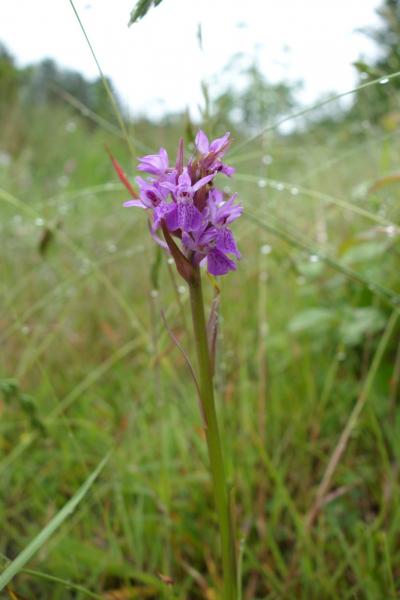
White helleborine - This understated wildflower can be seen May to July. It is very much a plant of calcareous woodlands, especially beech woods. The plants’ white flowers are rarely seen fully open. Usually between two and 12 flowers can grow on each spike. Amazingly this plant can take eight years to develop from seed! It can then take a further two to three years to flower.
The white helleborine is the Forest’s only plant species protected explicitly by law (NERC S41) and classified as vulnerable on the English Red List. The Heart of England Forest is believed to be the best location in Worcestershire for this plant.
The white helleborine is the Forest’s only plant species protected explicitly by law (NERC S41) and classified as vulnerable on the English Red List. The Heart of England Forest is believed to be the best location in Worcestershire for this plant.




